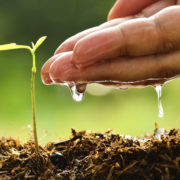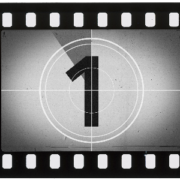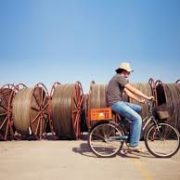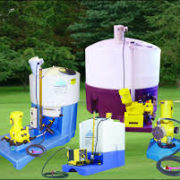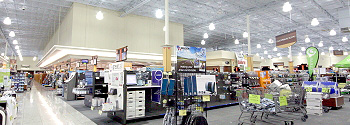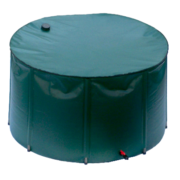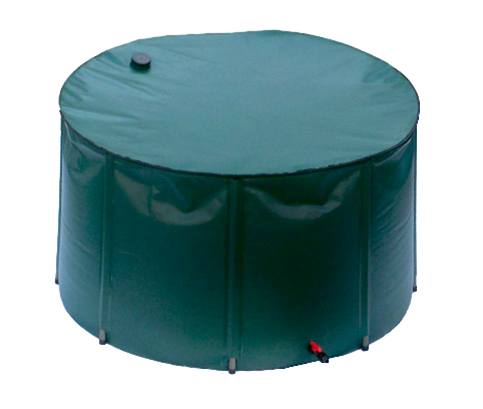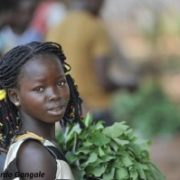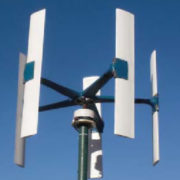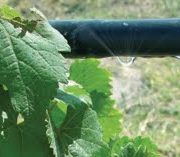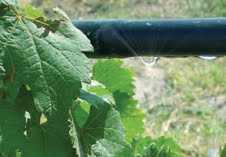Deal making for science, technology and industry: 1. Agtech
/en Uncategorized /por TobiasAgTech refers here to technologies that allow farmers to farm more efficiently and increase production. Drones, robotics, sensors, big data systems, are examples of this growing industry that is increasingly calling the attention of the big players in Silicon Valley. Perhaps the first and most known of AgTech inventions of all times was drip irrigation invented in Israel. Since a whole lot of new innovative techs have emerged that help the farmers to grow more food with less water. For example, the Israeli startup Saturas uses sensors that are placed in the plant to perform water monitoring. The sensor sends the information to automatic irrigation controllers, and if the base line drops the controllers get activated and provide precisely the water needed, no more and no less. The also Israeli Tal Ya created a smart polypropylene tray that collects due and saves 50% of the water irrigated. No doubt that Israeli AgTech is attracting the attention of the local and global angel and venture capital investors. Also global companies are making deals, joint R&D and other ventures with Israeli Agtech firms. At the end of the day, Agriculture is a multi billion dollar industry worldwide that combine also values of community and collaboration, and Israeli AgTech may well have the power to influence the agriculture of the future and its sustainability by integrating its advanced hitech into the farms. In the following video we briefly outline the deal making process for the AgTech sector in Israel. Other videos of these series will be released soon.
Israel, Food Security and the Developing World – Fulfilling the Technological Potential
/en Uncategorized /por TobiasThe workshop will take place from 13:30 to 17:30 and will consist of five sessions. Each session will include 1-2 short (10 minute) presentations of groundbreaking work which will be followed by a discussion and an opportunity for implementers of other related projects to mention their own work. Confirmed speakers include professors and students from Tel Aviv, The Hebrew and Ben Gurion universities, as well as from the Israeli government and some exceptional NGOs and private companies working in the field in developing countries. We will keep ample time for discussion in order to make the event inclusive.
The workshop will take place in room 527, Naftali Building (Social Sciences), Tel Aviv University.
Preliminary Program:
Introduction (13:30-13:45)
Session 1: Nutrition (13:45 – 14:15)
What are the long-term impacts of nutritional deficiency?
Can novel data based approaches help target the hungry in the developing world?
Session 2: Use of Agrochemical and Biological Inputs (14:15-15:00)
Why is the use of fertilizers and pesticides by smallholder farmers so often unbalanced?
Can supply chains be improved? Can targeted information help? The session will feature new evidence from the field in India.
Coffee Break (15:00-15:10)
Session 3: Irrigation and the Challenge of Small Scale (15:15-15:45)
Irrigation is critical for agricultural growth in the semi arid tropics. How can distributed irrigation systems be implemented on small scales in an economically scalable way? Innovative Israeli-led initiatives will be discussed.
Session 4: ICT and New Approaches to Extension (15:45-16:30)
The transfer of knowledge to smallholder farmers remains a persistent challenge.
Can new approaches including information and communication technology transform traditional extension?
Concluding Session: Networking and Facilitating New Partnerships Between Research and Practice (16:30-17:30)
Practical steps to enable new partnerships between Israeli academia, government, private firms and NGOs on overcoming challenges to the use of modern technologies by smallholders.
Michael Porter talks on the solution to food security and environmental risks
/en Uncategorized /por TobiasIn a world plagued by problems of all sorts such as world hunger, water shortages, deforestation, pollution and global warming, world-renowned planner Michael Porter talks about how to solve them from a business vision.
Governments and NGOs can not solve these problems alone since there are not enough resources for this. While he praises NGOs as an extremely proactive and positive structure but that is always into the challenge of resources lack. And where the resources come from? Well, from business activity, he argued.
His main argument is that most of the wealth is owned and generated by companies and these are the ones that can play a critical role in fighting the problems humanity faces under a scheme he calls ‘shared value’, which means that an economic value is created through business activity and a social/environmental problem is solved.
He mentions that audience is understandably thumbs down on some corporations that have polluted or generated problems. He adds that under old corporate scheme, to gain more companies tended to ignore effects that their activity could have on the environment. Under new scheme he proposes now, companies not only have to become more involved in issues of corporate responsibility, but go further and he says they have an opportunity to become the solution to problems, not being part of them.
Only business can generate economies of scale that can solve these complex problems and only businesses can generate resources, when they have a profit and that profit is the one that allows creating growing solutions to make them self-sustaining. The main challenge is how to make a critical mass of companies to see and act on this new formula, says Porter.
[youtube]https://www.youtube.com/watch?v=0iIh5YYDR2o[/youtube]
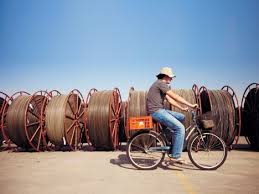
El riego por goteo fue inventado en Israel en los anios 50. Representa una solucion a los problemas de falta de agua y alimentos.
Among positive examples he brings there are Israeli drip irrigation companies that are making a revolution on agriculture by enlarging production and saving the precious liquid. In a world where population is growing, where there is an increased demand for food, particularly in developing countries where living standards are increasing at a breakneck pace but where the amount of soil and water is limited, and even worse the agricultural frontier is shrinking due to desertification and global warming, drip irrigation is a stunning solution because it makes optimal use of a scarce resource and expands production at the same time.
In his presentation, Porter also refers to sustainable forestry companies that sow Eucalyptus rather than extracting timber from native forests. He mentions distance training to remote areas – another area where Israel has much to offer. Then there are the inventions of some companies to medical issues such as AIDS.
Porter is considered the best business teacher of all time. He is Professor at the Harvard Business School. He is also founder of a number of NGOs.
New Software helps increase fresh agriculture production
/en Uncategorized /por TobiasA new platform that optimizes the use of fertilizers in agriculture is now available to farmers all over the world in any type of environment and weather conditions. This is an interactive software tool that allows each producer to take over the management of fertilization at a professional level, without they have necessarily to have prior experience. This allows farmers to reduce the use of fertilizers by 50 % and therefore save money, while increasing productivity and reducing the negative impact on the environment. The software lets farmers create fertilization formulas and programs based on their specific conditions. The program provides recommendations for an optimal fertilization (fertilizer types, dosage and application) based on country-specific data, such as soil / water / leaf analysis and crop nutritional requirements.
The program selects and instantly calculates an optimum fertilizers mixing, according to water and soil composition, and crop requirements.
With this solution, users avoid undesirable chemical combinations as well as over or under fertilization, damage to soil and water resources, obstructions to irrigation issuers, salinity buildup, and other requirements that modern Agriculture develops.
The solution addresses a full range of fertilization and irrigation objectives, which can be planned in minutes instead of days. Special program algorithms monitor and manage nutritional requirements for all kind of crops while it balances complex and delicate nutrient combination from which soil, water and fertilizers are made up.
Fertilizers impacts on the environment
One of the greatest challenges in modern agriculture is to provide food for the growing world population, and to minimize pressure on the environment. Fertilizer misuse can have negative effects on the environment, such as:
- Groundwater and surface water pollution
- Damage to soil structure and increased soil erosion
- Contaminated food products
- Air Pollution
Groundwater pollution
Fertilizers accumulated in the ground could leach to lower layers and eventually reach groundwater. Ratio in which nutrients excesses are lost depends on various factors such as soil type, electric charge of nutrients, nutrient concentrations, etc.
Being highly soluble, nitrates (NO3) have the greatest potential to reach groundwater. Leaching of nitrates in agricultural fields may increase nitrate concentration in groundwater to unacceptable levels for drinking water quality.
Unused fertilizer can also flow into lakes, rivers and pools and lead to algae and weeds growing.
Salinity accumulation and damage to soil structure
When accumulated in the soil, fertilizer excesses increase salinity accumulation and reduce soil fertility. Subsequently, soil structure is damaged and soil erosion is caused.
Want to know more about fertigation? We have online courses on this topic, please visit http://oceanbusiness.com.es/inscripciones-cursos-line/
High-Power, energy saving lighting system made in Israel can save up to 60%
/en Uncategorized /por TobiasThe business of energy saving exceeds $800 billion annually. One of the sub-sectors of this branch is lighting, which represents 14% of all electricity consumption in Europe and 19% of all electricity in the world (source: IEA – International Energy Agency).
In many parts of the world such as Latin America, a very high percentage of luminaires still use old technology with low potential for savings. Therefore, the potential for new energy-saving solutions is huge.
An example of the latest technology is represented by an Israeli company which is a pioneer in the energy saving field and produces the best energy-efficient solutions for high-power lighting with proven energy savings of up to 60%, achieved by integrating smarts ballasts, low-power lamps, and lighting control systems. Its basic application is in places where illumination systems use HID (High Intensity Discharge) bulbs, e.g. highways and avenues, agricultural greenhouses, parking lots, industrial warehouses, shopping centers, etc., where illumination levels can be automatically varied. It allows for an efficient transition to LED lamps.
Rain water harvesting the latest trends
/en Uncategorized /por Tobias
Rainwater expert Dr. Ilan Adler, who is currently studying water and green technologies, recently visited Israel. Adept in the subject and curious about seeing the innovations developed within Israel – a country recognized as a center of global innovation and a provider of advanced solutions and equipment to irrigate family properties – he spent several days assessing different solutions developed in the Holy Land. Among them were technologies for the collection and use of rainwater for various uses in the home and field.
In his manual, Adler defines rainwater collection as the collection, transport, and storage of natural rain which falls on organic and inorganic structures.
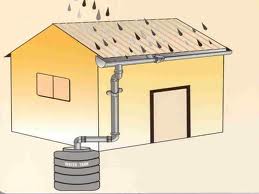 Surfaces that collect water may be house and building roofs, store and shop roofs, open areas, etc., and collection tanks are designed to be used specifically in this field. According to the expert, the stored water can be used for any purpose, but different filters should be adapted for each use. A very simple filter can be used for basics such as laundry, cleaning, toilets, and irrigation, but for personal cleanliness and drinking water, a different, more complex set of filters must be used.
Surfaces that collect water may be house and building roofs, store and shop roofs, open areas, etc., and collection tanks are designed to be used specifically in this field. According to the expert, the stored water can be used for any purpose, but different filters should be adapted for each use. A very simple filter can be used for basics such as laundry, cleaning, toilets, and irrigation, but for personal cleanliness and drinking water, a different, more complex set of filters must be used.
After evaluating Israeli rainwater dropdown storage tanks, the expert concluded that they are a practical solution. They seem to be very strong, don’t leak, and are easy to handle, transport, and store, especially when compared with rigid tanks.
The rainwater tanks prove to extremely useful for storing water in both homes and in small agricultural plots. These tanks are used to supply the irrigation needs through gravity drip irrigation systems (GDS) when other supply sources are less reliable.
The GDS system has been designed to provide high-performance, cost-effective irrigation equipment to small domestic plots. The equipment consists of a storage tank that can be filled from any local water source, water distribution pipes, a filter, and drip lines suitable for all types of crops.
GDS advantages include:
Low-cost irrigation for large areas such as small rural orchards, and simple technology that increases household income and food supply to rural communities.
This combination of tanks with the GDS system is ideal for small plots in order to achieve greater efficiency and better results since it: maximizes water and fertilizer savings to produce better results at a lowest cost; has very simple installation, operation, and maintenance procedures; doesn’t need infrastructure or electricity; increases household income; and strengthens the rural communities’ structure.
You can download Dr. Adler’s full manual in Spanish by click on Captación del agua de lluvia
We invite you to voice your doubts, interests, questions, and comments to this post.
New Animated Video Tells the Story of Agriculture, Climate Change and the Green Economy
/en Uncategorized /por TobiasThe Farming First coalition has just launched a new, 3-minute animated video called «The Story of Agriculture and the Green Economy«.
The video highlights the importance of sustainable agriculture in supporting rural livelihoods, feeding a growing population and safeguarding the environment. The video illustrates the fundamental link between agriculture and the green economy, addressing topics such as climate adaptation/mitigation, economic growth, improved access for women farmers, employment, food security, poverty reduction and sustainable resource management.
The video is free to be embedded on blogs and websites, and we would be happy to send over a short summary of its key messages and still images from the video should anyone be interested in featuring it on their blogs.
This animated video is part of Farming First’s multiple award-winning work related to agriculture and the green economy. You can view the animated video (as well as a related interactive infographic) at the following link: www.farmingfirst.org/
[listly id=»CcB» layout=»full»]
New business at the speed of wind
/en Uncategorized /por Tobias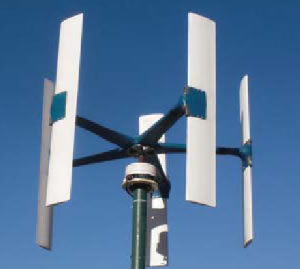 Wind mini turbines tech has been a very popular topic in this blog, so we decided to expand the information. The emphasis is doing on commercial aspects of these wind mini turbines for both rural areas and its new application in cities.
Wind mini turbines tech has been a very popular topic in this blog, so we decided to expand the information. The emphasis is doing on commercial aspects of these wind mini turbines for both rural areas and its new application in cities.
Many remote rural areas and even less remote areas have serious problems getting reliable electricity sources. For example, in Venezuela not only remote areas face this problem but nearly all populations within the country suffer blackouts and electricity shortage. This situation, if less severe than in Bolivarian country, is also common in other American countries.
An ecologically viable way to alleviate these problems in areas with suitable wind conditions – usually where winds blow over 6 meters per second- is generating electricity by using turbines or wind turbines as they are better known.
Main topic of the article deals with most common use of wind mini turbines, which means turbines with less than 100 kW that are intended for auto consumption in places where there is no electricity network. However, with changes in legislation, it is becoming possible to install these systems in cities. This allows the use of electricity generated by turbines for home consumption in buildings where there is already an electric network, such as a home or business that are already drawing power from the grid. In this mode, the energy generated is consumed directly by operating appliances and prevents that his owner buy that energy to the electric company. For example, a conventional turbine with a power of 1.75 kW could generate over 50% of the annual electricity in an average household. The other application, which is already applied in Israel for photovoltaic power and in other countries for wind power, involves selling the power generated by mini turbines to the power network.
On the trade issue
Many professionals interested in installing the mini turbines commercially ask me where to start because the first step is the assessment of wind resource. There is existing data about this in many areas but there are also special devices that measure wind characteristics in situ. On the issue of costs: Total costs for the installation of a wind turbine can vary depending on several parameters such as the kind of turbine cost, construction contracts, type of machine, project location, and other factors. Components of wind projects cost include site analysis expenses, turbine price and charge, construction costs, permitting and interconnection studies, utility system up-dates, transformers, protection and measurement equipment, insurance, operations, warranty, maintenance and repair, legal fees and consultation. Other factors that will impact your project economics include financing costs, size of your project, and taxes.
– Small turbines cost about $3,000 to $5,000 per kilowatt of capacity. That means a 10 kilowatt machine can cost between $35,000 and $50,000.
The video below shows installation and start-up of 1kw turbine in Northern Israel. Double-click and download the file.
Drip Irrigation systems and water conservation: alternatives and technological innovations
/en Uncategorized /por TobiasDrip irrigation systems have been widely used as low water consumption systems for irrigation purposes. But which are the trends in 2013?
By Tobias Mendelovici, Agronomist of Hebrew University of Jerusalem and Ocean Business Director.This article was translated from its original version in Spanish.
Drip irrigation systems allow accurate amounts of water application without waste but also allow the integrated use of fertilizers through them. These systems were invented by engineers and farmers in Israel several decades ago. Harsh conditions of an arid territory made these systems were developed as they make more efficient use of natural resources. In fact, over 80% of irrigated areas in Israel use drip irrigation and micro irrigation.
- Compared with gravity irrigation systems or grooves the water savings in drip irrigation systems ranges by 50-70% and compared with sprinkler systems they have 20% savings.
During my agronomy studies at Hebrew University of Jerusalem for almost 25 years, I remember how water with high salinity levels was used in experimental fields and tolerant crops like tomatoes, melons, asparagus, grapes and olives were drip irrigated. In fact, these systems allow the use of waters with higher salinity levels for irrigation. And since then there have been many advancements.
New technological developments in Israel have allowed introducing the first generation of drippers: auto compensated or compensated drippers as well as high speed production lines for cylindrical and flat drippers.
Drippers are unique in the market since they are designed especially for areas with varied topography, scarce and poor quality water resources which make them suitable for uneven terrain, as well as with sewage and recycled waters.
In contrast with super smart and efficient drip irrigation systems there are irrigation systems called TAPE which are a cheaper competitor and consists of a plastic tube with holes through which water goes out. This product cannot provide special functions that provide drippers, such as cleaning water or high pressure change when water enters to the system and change to zero pressure that allow water to drip out. Furthermore, TAPE tubes do not guarantee that water discharge is heterogeneous through lower tube which is critical for some crops, while for others such as cotton and potatoes it is not as important.
And after describing today and future trends, I end up this article with an interesting story from the distant past of drip irrigation: In one of the field trips I made in Southern Israel near to Ben Gurion University experimental station to a plot that was cultivated 2,000 years ago by ancient farmers of the desert: the Nabataeans . Their agricultural methods were extremely sophisticated. They built terraces and cleaned rocks in the floor and so they managed that every water drop from the rains were collected and directed to the fields by gravity.
- Today, 2000 years later there are still irrigation systems for gravitational dripping which are ideal for small plots of lands since they are very simple for installing, operating and maintaining. No infrastructure and no electricity are needed. These systems are compatible with displayable tanks that store rainwater (see http://oceanbusiness.com.es/captacion-del-agua-de-lluvias/)
- Visit the following link for more information about Israeli international recognition in this topic http://oceanbusiness.com.es/reconocen-a-israel-como-lider-mundial-en-la-provision-de-tecnologias-de-riego-y-agua/
Photos: Metzer’s Courtesy

